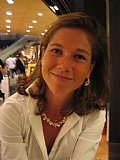Introduction
The Dutch language, with its rich history and cultural significance, is spoken not only in the Netherlands but also in parts of Belgium and other Dutch-speaking regions around the world. For those aspiring to work, study, or reside in Dutch-speaking countries, demonstrating proficiency in the Dutch language is often a prerequisite. In this guide, we will delve into the main Dutch language proficiency exams that play a pivotal role in assessing one's ability to understand, speak, read, and write in Dutch.
1. Inburgeringsexamen (Civic Integration Exam)
The Inburgeringsexamen, or Civic Integration Exam, is a fundamental Dutch language and culture examination for immigrants to the Netherlands. It is designed to ensure that newcomers have the language skills and knowledge necessary for successful integration into Dutch society. This exam is a mandatory requirement for immigrants seeking permanent residency or Dutch citizenship.
The exam comprises multiple-choice questions and speaking tasks that assess the candidate's basic Dutch language skills. It includes separate assessments for reading, writing, speaking, and listening skills. Successful completion of the Inburgeringsexamen demonstrates a fundamental level of Dutch language proficiency and cultural understanding, allowing individuals to navigate daily life in the Netherlands effectively.
2. Staatsexamen NT2 (State Examination of Dutch as a Second Language)
The Staatsexamen NT2, or State Examination of Dutch as a Second Language, is a comprehensive examination tailored for non-native speakers who wish to study or work in the Netherlands. It is recognized as a benchmark of Dutch language proficiency and is widely accepted by educational institutions and employers.
The examination consists of two levels: Programma I and Programma II, with Programma II representing a higher proficiency level. Staatsexamen NT2 evaluates candidates in reading, writing, listening, and speaking skills. Successful completion of this examination demonstrates a strong command of the Dutch language, making it an essential credential for individuals pursuing higher education or professional careers in the Netherlands.
3. Certificaat Nederlands als Vreemde Taal (CNaVT)
The Certificaat Nederlands als Vreemde Taal (CNaVT) is an internationally recognized Dutch language proficiency exam. It is designed to assess language proficiency in various contexts, including social, professional, and academic settings. The CNaVT offers a range of levels, including Threshold (A2), Waystage (B1), and Vantage (B2), allowing candidates to choose an appropriate level based on their language goals and proficiency.
This exam is instrumental in demonstrating one's ability to communicate effectively in Dutch, regardless of the specific context. It is widely recognized and accepted by educational institutions and employers in Dutch-speaking countries.
4. European Language Certificates (TELC Dutch)
TELC offers Dutch language exams for various purposes, including general communication, business interactions, and academic pursuits. These exams are aligned with the Common European Framework of Reference for Languages (CEFR) and provide a standardized assessment of language proficiency.
TELC Dutch exams are recognized not only in the Netherlands but also internationally, making them a valuable credential for individuals seeking to demonstrate their Dutch language skills in diverse contexts.
Conclusion
Proficiency in the Dutch language is a gateway to unlocking opportunities in Dutch-speaking countries and understanding their rich cultural heritage. The main Dutch language proficiency exams, including the Inburgeringsexamen, Staatsexamen NT2, CNaVT, and TELC Dutch, play a vital role in assessing and certifying language skills. Whether for immigration, education, or career advancement, these exams provide a structured and standardized means of demonstrating one's Dutch language competence. As individuals embark on their language learning journey, these examinations serve as valuable milestones on the path to mastering the Dutch language and embracing the cultural diversity of Dutch-speaking regions.















